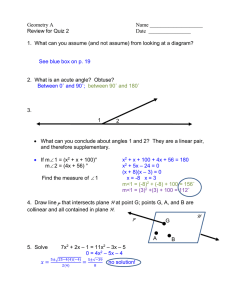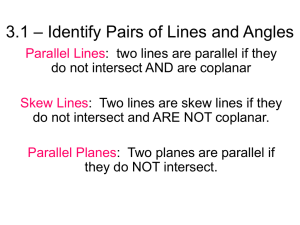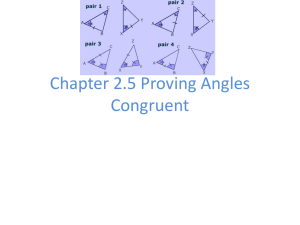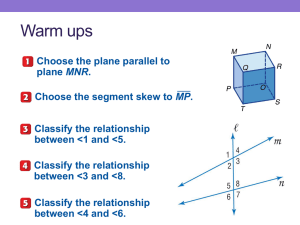Vertical Angles, Linear Pair, and Bisector
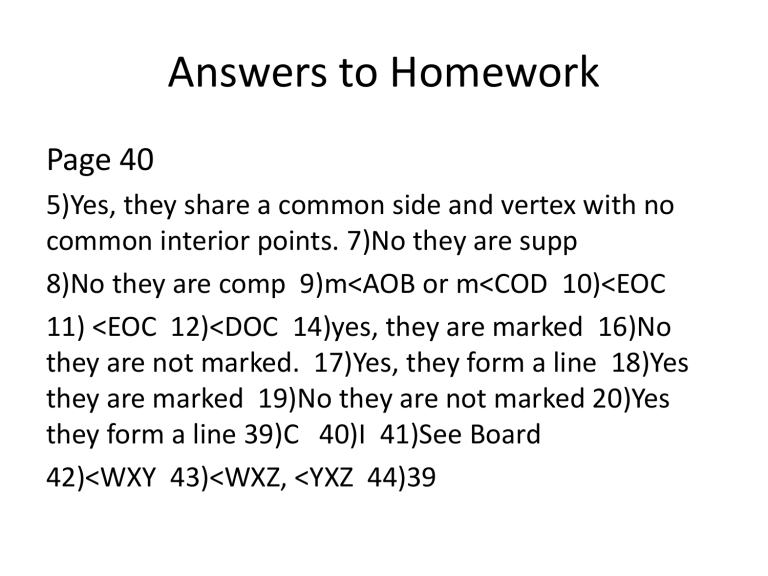
Answers to Homework
Page 40
5)Yes, they share a common side and vertex with no common interior points. 7)No they are supp
8)No they are comp 9)m<AOB or m<COD 10)<EOC
11) <EOC 12)<DOC 14)yes, they are marked 16)No they are not marked. 17)Yes, they form a line 18)Yes they are marked 19)No they are not marked 20)Yes they form a line 39)C 40)I 41)See Board
42)<WXY 43)<WXZ, <YXZ 44)39
Vertical Angles and Linear Pair
September 8, 2011
• Objective: You will be able to identify and solve problems with vertical angles and linear pairs.
• Bell Ringer: Solve for x
2x + 53 x + 7
Angle Pairs
• Vertical Angles: Two angles whose sides are opposite rays. The angles are congruent.
(They form an X)
• Linear Pair: Two angles that share a common ray and form a line.
(The angles are supplementary)
Example
• <KPL and <JPL form a linear pair. If m<KPL = 2x + 24 and m<JPL = 4x + 36, what are the measures of the two angles?
2x + 24 + 4x + 36 = 180
6x + 60 = 180
6x = 120 x = 20 m<KPL = 2(20) + 24 = 64 m<JPL = 4(20) + 36 = 116
Linear Pairs are Supplementary
Combine Like Terms
Subtract 60
Divide by 6
Substitute 20 for x
Example
• Solve for x and then find the measure of the two angles.
6x + 18 = 8x – 2
6x + 20 = 8x
20 = 2x
10 = x
Vertical Angles are Congruent
Add 2 to both sides
Subtract 6x from both sides
Divide by 2
6(10) + 18 = 78
Substitute 10 for x
Bisector
• An angle bisector is a ray that divides two angles into two congruent angles.
• Example: Ray CF bisects <ACE, find the value of x and the measure of <ACE.
5x = 2x + 24
3x = 24 x = 8
5(8) + 2(8) + 24 = 80
Definition of a bisector
Subtract 2x from both sides
Divide both sides by 3
Substitute 8 for x
Example 1
• Find the value of x.
Answer: 23
Example 2
• Find the value of x.
Answer: 20
Example 3
• Find the value of x.
Answer: 8
• Solve for x
Example 4
Answer: 35
Example 5
• Ray BT bisects <ABC, find the value of x
Answer: 10
• Solve for x
Example 6
Answer: 31
Example 7
• Ray BT bisects angle ABC. Solve for x.
Answer: 5
